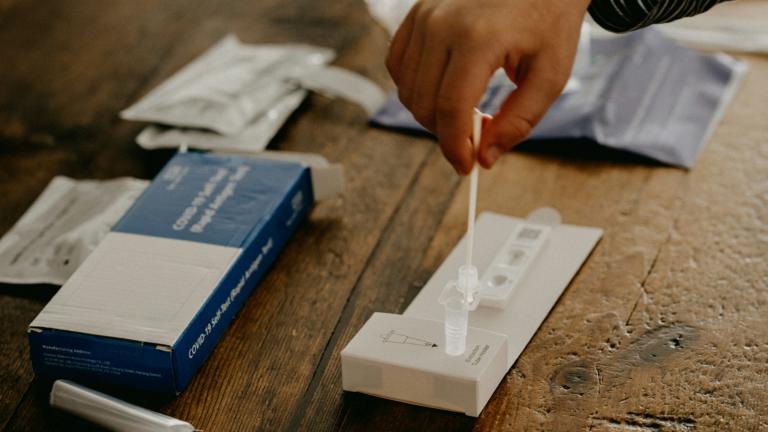
(CNN) — A new study from Boston University’s CTE Center has discovered more than 60 cases of chronic traumatic encephalopathy, known as CTE, in athletes who were under the age of 30 at the time of their death. This is the largest study to look at the neurodegenerative disease in young people.
Researchers found about 40% of the brains studied had developed some of the earliest signs of the disease, which is associated with repeated head trauma.
The study also includes what researchers believe to be the first case of an American female athlete diagnosed with the disease.
The report, published in JAMA Neurology on Monday, describes the features of 152 brains donated between February 1, 2008, and September 31, 2022, to the UNITE brain bank — the largest tissue repository in the world focused on traumatic brain injury and CTE. Sixty-three out of the 152 donated brains (41%) had autopsy-confirmed CTE.
The disease can only be formally diagnosed with an autopsy and has been associated with memory loss, confusion, impulse control problems, aggression, depression, impaired judgment and suicidal behavior.
Unlike past studies, which looked at CTE primarily among professional American football players, the majority of the athletes diagnosed in this study were amateur athletes who played at the youth, high school, and college levels.
“This study clearly shows that the pathology of CTE starts early,” said Dr. Ann McKee, coauthor of the study and director of the Boston University CTE Center. “The fact that over 40% of young contact and collision sport athletes in the UNITE brain bank have CTE is remarkable,” adding that community brain bank studies show that fewer than 1% of the general population has CTE.
McKee also notes that all the brains included in the study were donated for a reason.
“[The study] is not a general population study. It’s not a prevalence study,” she said. “We get brain donors who are very symptomatic, and that’s why the family pursues brain donation.”
CTE in Young Donors
CTE is an Alzheimer’s-like disease has been most commonly associated with former professional football players, but has also been detected in military veterans, including many who have been exposed to roadside bombs and other types of military blasts.
Previous studies have shown that repetitive hits to the head — even without concussion — can result in CTE.
Most of the donors analyzed in this recent study played football (60%), followed by soccer (15%) and ice hockey (10%). Other sports included in the study that resulted in CTE diagnosis are amateur wrestling, rugby and professional wrestling.
The donors’ ages at the time of death ranged from 13 to 29 years old. The youngest person diagnosed with CTE in the study was a 17-year-old high school football player, McKee told CNN.
Brain donors who died before they reached 30 were selected to minimize any contribution from age-related conditions, the study authors said.
Because a majority of the CTE samples previously evaluated came from older adults, looking at younger brains can provide an important perspective, said Dr. Julie Stamm, a clinical assistant professor at the University of Wisconsin-Madison who was not involved with the new study.
“As people get older, there are age-related neurodegenerative changes, and just general degenerative changes that are happening,” Stamm said. “So, looking at the younger brains gives the ability to look at the CTE pathology without all of these other comorbid pathologies.”
Another important facet of the study is that amateur athletes comprised 71.4% of those diagnosed with CTE.
Of the 48 donors diagnosed with CTE who played football, 37 were amateur football players and 11 played for the NFL. Position played made no difference in developing CTE, but those who played longer were more likely to be diagnosed with the disease. On average, those that had CTE played football for 2.8 years longer than those that didn’t develop the disease.
“It’s become fairly well recognized that CTE is a risk for high-level elite athletes, especially football players,” McKee said. “But it does show that CTE can start in very young athletes who only play amateur sports.”
In a study published earlier this year, BU’s CTE Center found nearly 92% of 376 former NFL players studied were diagnosed with CTE.
Due to a lack of data, McKee said it is unclear if CTE is more common in men than in women.
Only 11 of the total 152 brain donors evaluated in the new study were female, including one positive diagnosis, a 28-year-old collegiate soccer player who was not identified.
Earlier this year, scientists in Australia diagnosed the world’s first case of CTE in a professional female athlete, Heather Anderson, an Australian Football League player who was found in an autopsy by scientists at the Australian Sports Brain Bank to have low-stage CTE during.
CTE Symptoms
The neurodegenerative brain disease CTE can be found in people who have been exposed to repetitive head impacts. The disease is pathologically marked by a buildup of tau protein in the brain that can disable neuropathways.
In this study, McKee says the largest amount of damage seen in athletes diagnosed with CTE was found in the frontal lobe.
“The frontal lobe is very important for judgment, and attention. It’s also important for things like what we call executive function, planning and organizing. It may play a role in impulsivity,” she said.
During analysis, McKee and her team also saw structural changes to the brain.
“They more commonly had something called a cavum septum lucidum,” McKee said. “It’s a membrane that divides the two halves of the brain and it becomes split. And that split membrane was quite common, and significantly more common in those people that have CTE.”
McKee noted there were also some suggestions of atrophy or shrinkage of the brain in those people diagnosed with CTE because their ventricles — cavities within a brain’s interior — were slightly dilated, indicating that they likely lost some brain volume.
In the new study, clinical symptoms appeared in all of the athletes regardless of whether they had CTE, including depression, difficulty controlling behaviors and problems with decision-making.
Substance abuse was also frequent, with alcohol abuse present in 43% of donors and drug abuse in 38%.
The study shows that 87 of the 152 donors died by suicide, including 33 donors who also had CTE. But that finding may not be as notable as it seems, McKee said.
“The most common cause of death across the board, whether they had CTE or not, was suicide, followed by accidental overdose,” she said, noting that suicide is one of the leading causes of death among younger people.
Data from the US Centers for Disease Control and Prevention shows in 2021, suicide was the second leading cause of death for people ages 10 to 14 and 20 to 34.
Although CTE can only be diagnosed after a person has died, McKee said it is important for athletes to treat the symptoms regardless of whether they stem from the disease.
“These individuals need to go to a medical professional and be evaluated, because more than likely these symptoms could be treated, could be reversible, and it’s not a cause for despair,” she said.
Concerns for Parents
As researchers continue to conduct more research on how repetitive head impacts affect the brain, particularly in younger people, Stamm said there is no evidence that suggests exposure to impacts at a younger age increases the risk for developing CTE.
“If somebody had 5,000 lifetime impacts from age 8 to 18 versus 5,000 lifetime impacts from age 14 to 24, their risk would be the same,” Stamm said.
However, when someone begins playing football as a young child and continues to play through adulthood, that is when their risk of developing the disease increases, Stamm said, adding that “total cumulative lifetime exposure to repetitive brain trauma is the greatest risk factor for CTE.”
McKee adds that the longer someone plays football, in particular, their risk of developing CTE doubles every 2.6 years.
Experts say parents of young athletes should proceed with caution but not overlook the benefits of sports.
“I think for the parent that is wondering, ‘Should my child play youth or high school football,’ we have no evidence that there’s going to be a long-term problem,” says Dr. Steven Broglio, director of the University of Michigan concussion center. “It’s kind of like smoking: the more you do it, the more your risk grows.”
Although the study found evidence of CTE among some younger people, most with the diagnosis had significantly more years of exposure to contact sports.
Broglio adds that ultimately, it is an individual choice if a parent does or does not want their child to play contact sports.
“For the average person, the benefits of sport participation, whether it’s contact collision, or something else, far outweigh the risk,” he said. “But that doesn’t mean there isn’t risk involved when you play a sport.”
The-CNN-Wire™ & © 2023 Cable News Network, Inc., a Warner Bros. Discovery Company. All rights reserved.








